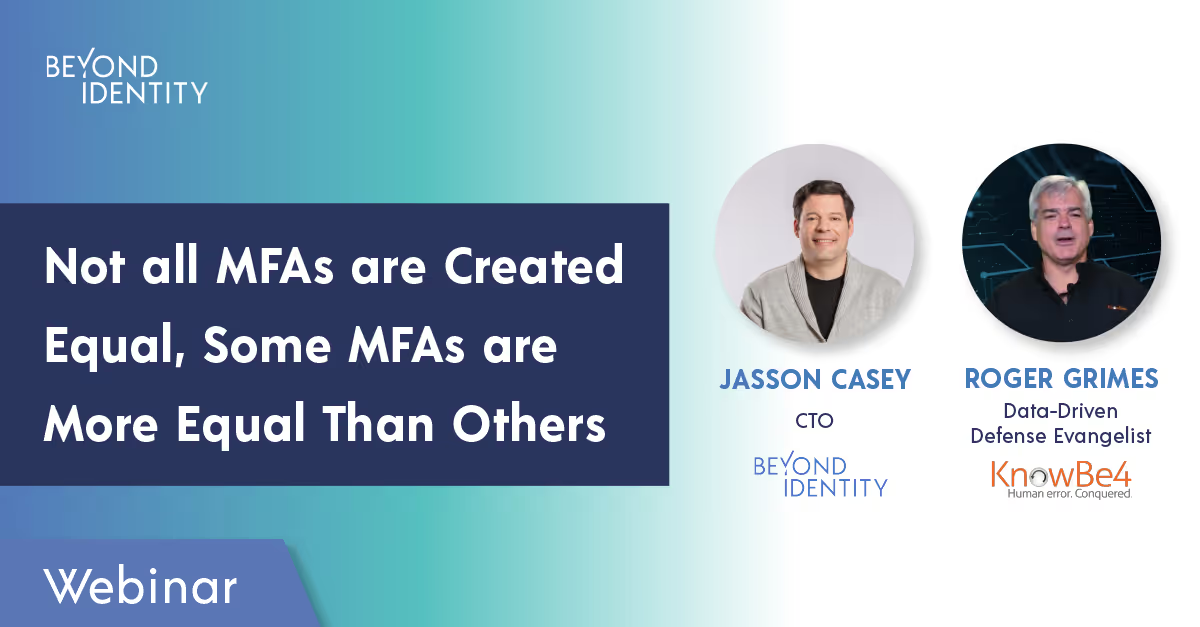Video
Not all MFAs are Created Equal, Some MFAs are More Equal Than Others
Table of contents

Beyond Identity Joins NVIDIA Inception Program to Advance Hardware-Enforced Security for the AI Era
January 5, 2026

Chips and SLSA: Why TPMs Matter for Code Commits
December 19, 2025

Why Is Code Provenance Non-Negotiable in the Age of AI?
December 17, 2025
.avif)
How Beyond Identity & Nametag Stop Identity Fraud at Onboarding & Recovery
November 19, 2025
.avif)
New: Self Remediation Features to Reduce Help Desk Tickets and Improve UX
November 13, 2025
.avif)
NYDFS Part 500 in 2025: Key Deadlines, New Requirements, and Compliance Strategies
October 28, 2025

From Reactive to Proactive: A Practitioner's Guide to Zero Trust After the F5 Breach
October 17, 2025
.avif)
FIDO Is Not Enough for Enterprise Security
October 9, 2025

Make Identity-Based Attacks Impossible
August 11, 2025

Meeting CJIS Compliance with WDL
May 27, 2025

PCI DSS Compliance with Beyond Identity
March 6, 2025
.avif)
Online Job Board Safety: How and Why To Avoid a Scam
March 7, 2024

ChatGPT's Dark Side: Cyber Experts Warn AI Will Aid Cyberattacks in 2023
February 29, 2024

Improving User Access and Identity Management to Address Modern Enterprise Risk
February 20, 2024

Okta Cyber Trust Report
January 5, 2024

Securing Remote Work: Insights into Cyber Threats and Solutions
October 30, 2023

Networking Dinner with MightyID and Tevora
December 9, 2025

Alphinia CISO Mastermind Dinner
December 1, 2025

Myriad360 Client Appreciation Celebration
November 20, 2025

GuidePoint Security Movie Premeire of Wicked
November 19, 2025
.avif)
How AI Is Accelerating Threats: The Inside Scoop on Emerging Phishing GPTs
November 18, 2025

GuidePoint Security 3rd Annual Houston Golf Outing
November 13, 2025

GuidePoint Security's Pinehurst Golf Outing
November 12, 2025

GuidePoint Security Public Sector Vendor Fair
November 5, 2025







